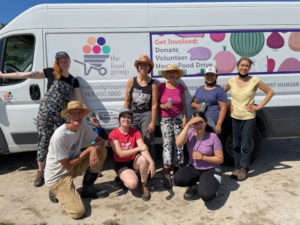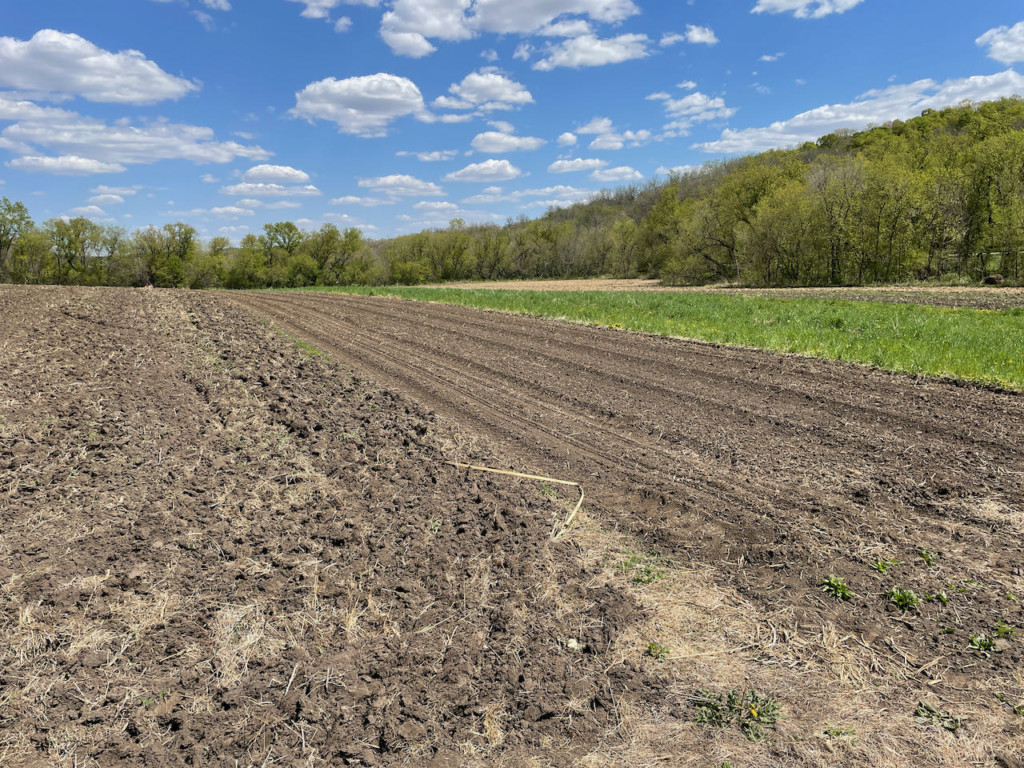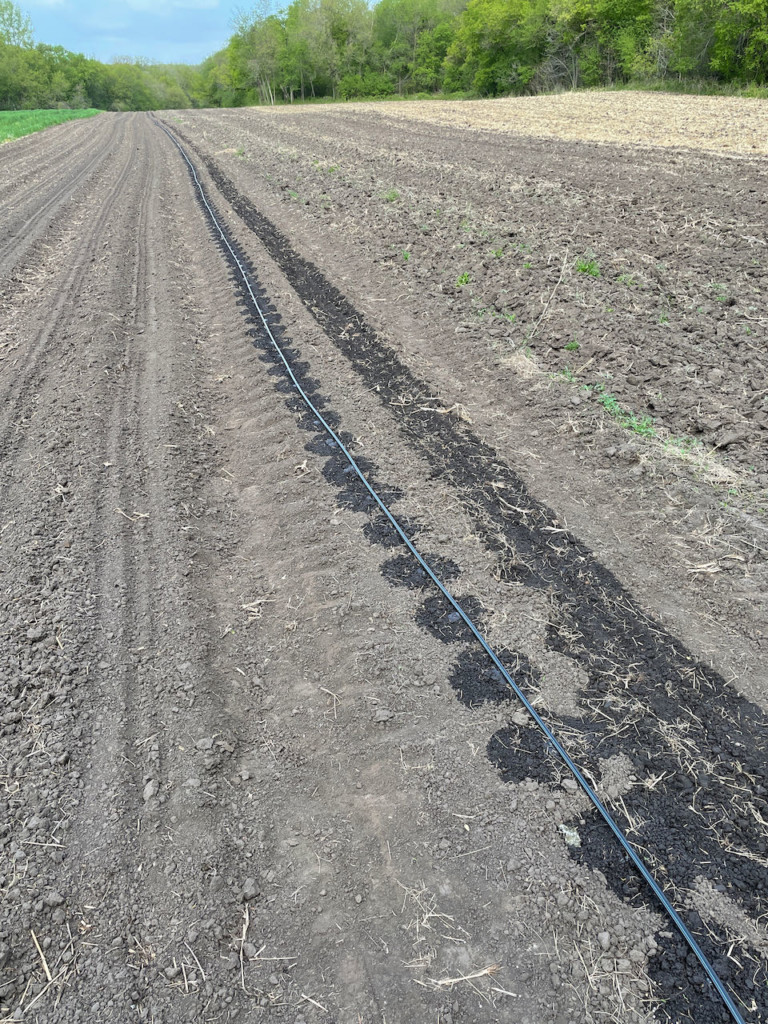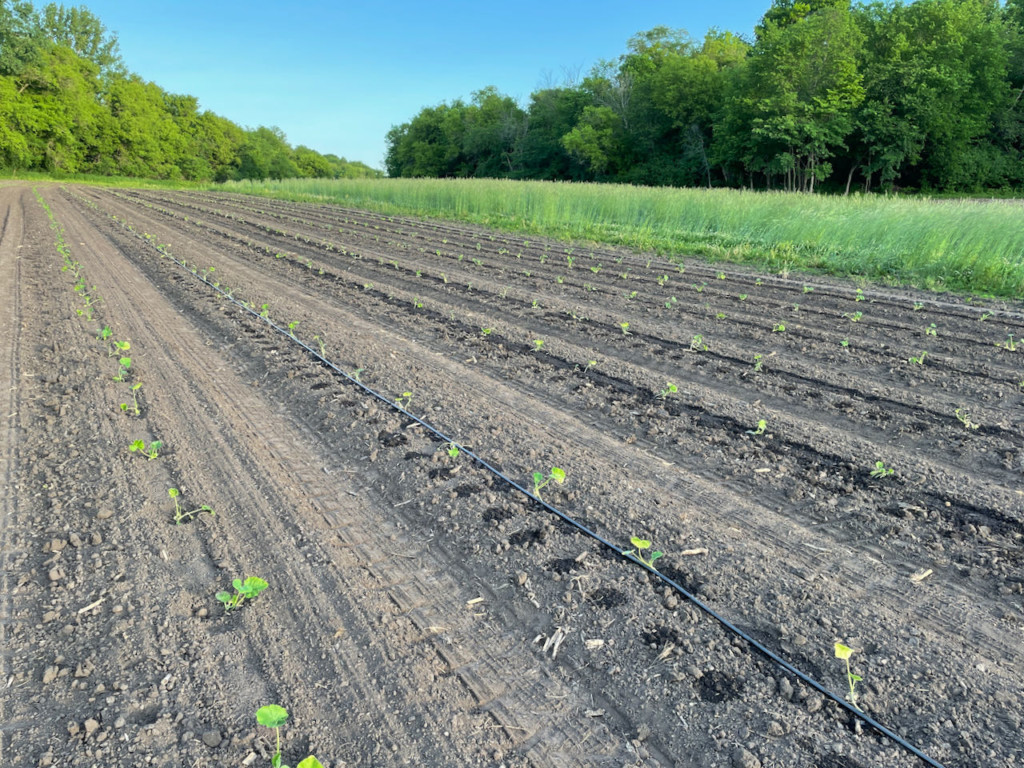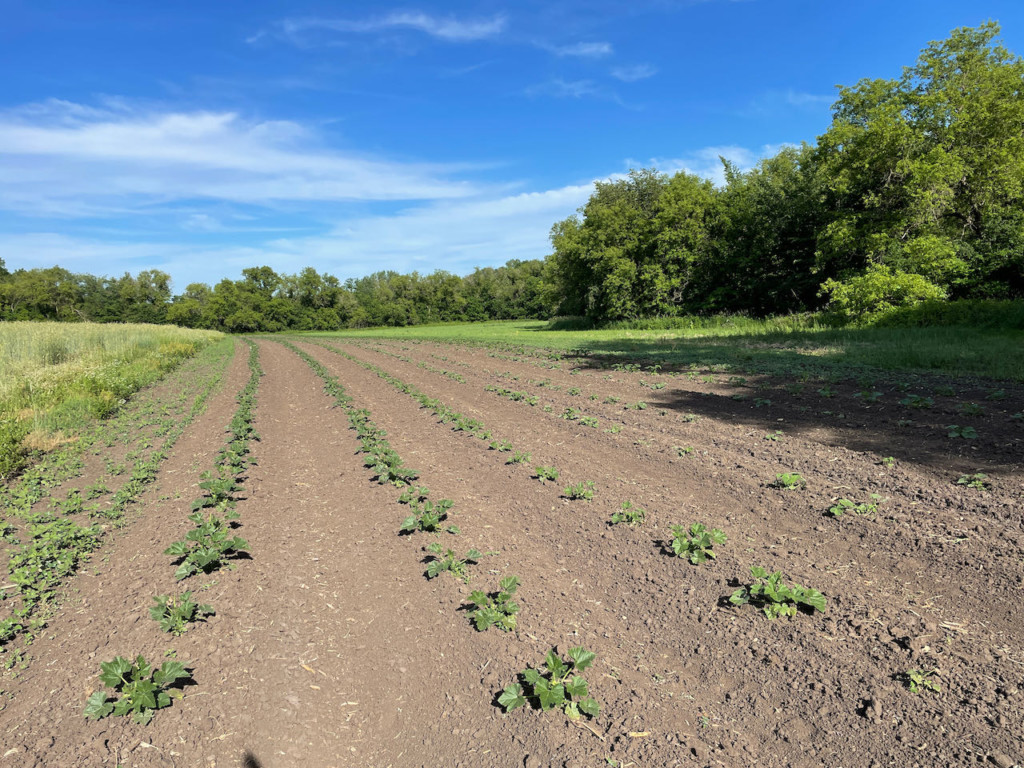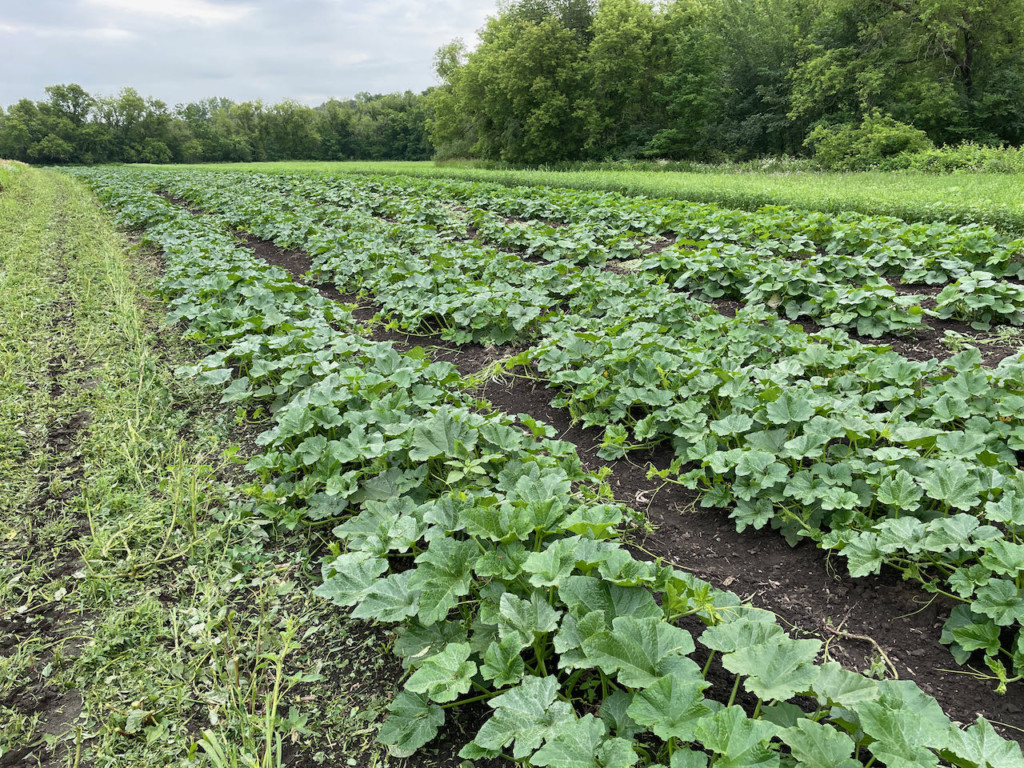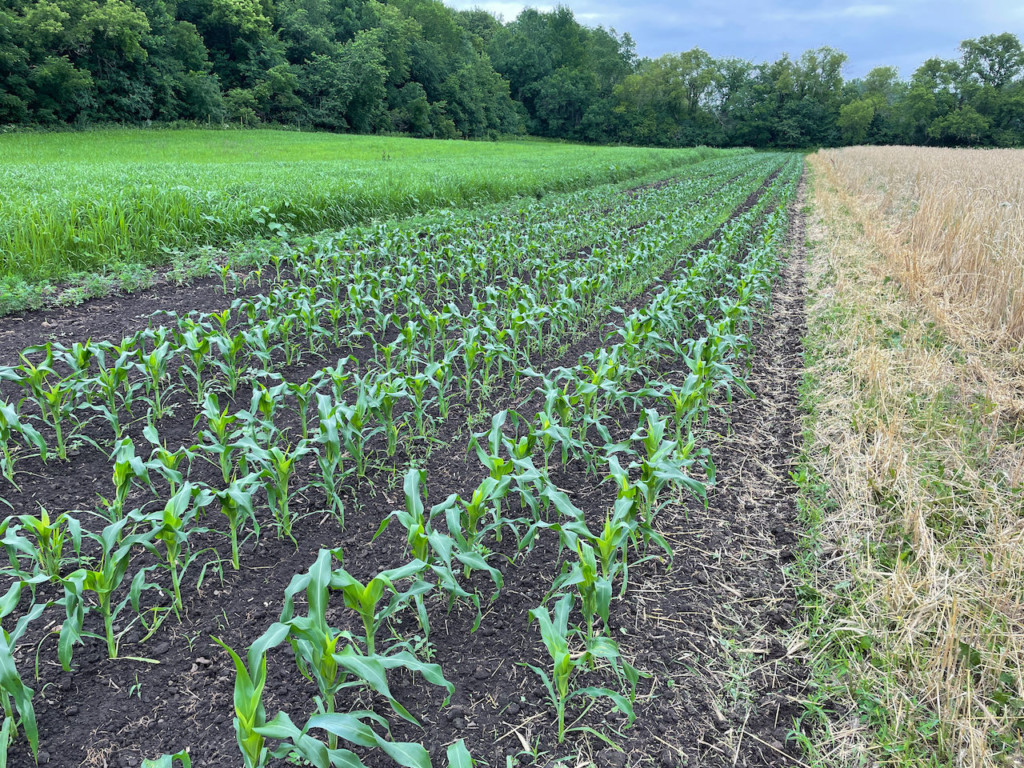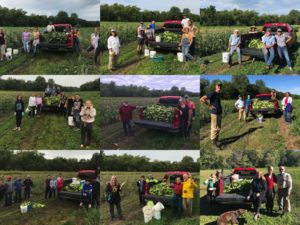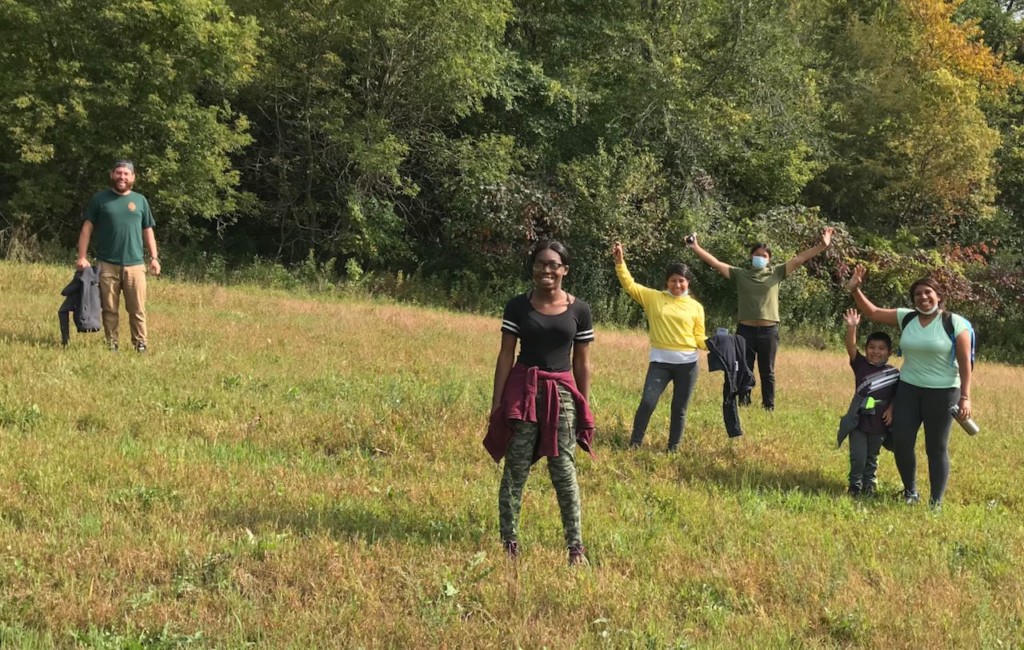It was a gorgeous day for pulling, washing and packing carrots! Big thanks to our hearty crew: Barb, Cara, Danielle, Dillon, Erika, Hannah and Itzel. In less than three hours we pulled, packed and washed two 650-foot rows of organically-grown carrots (hundreds of pounds!). The Food Group will distribute these to families in need and I’ll provide the details in a later post. For now, feast your eyes on the fine work these folks did today.
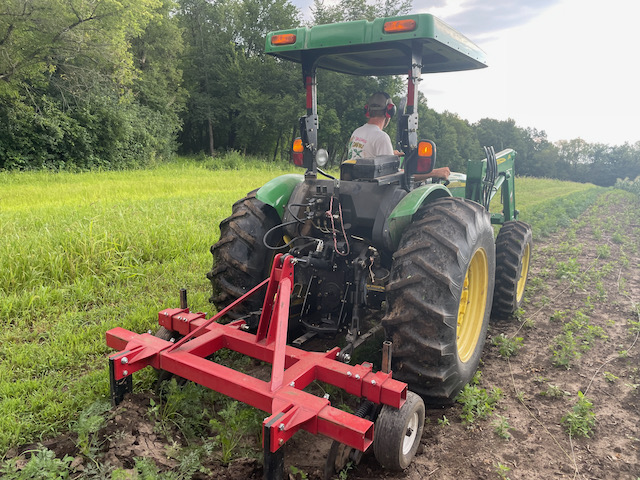
Dana Jokela from Sogn Valley Farm lifts our carrots with his carrot lifter
Here’s a video to see it in action. Carrot Digger closeup
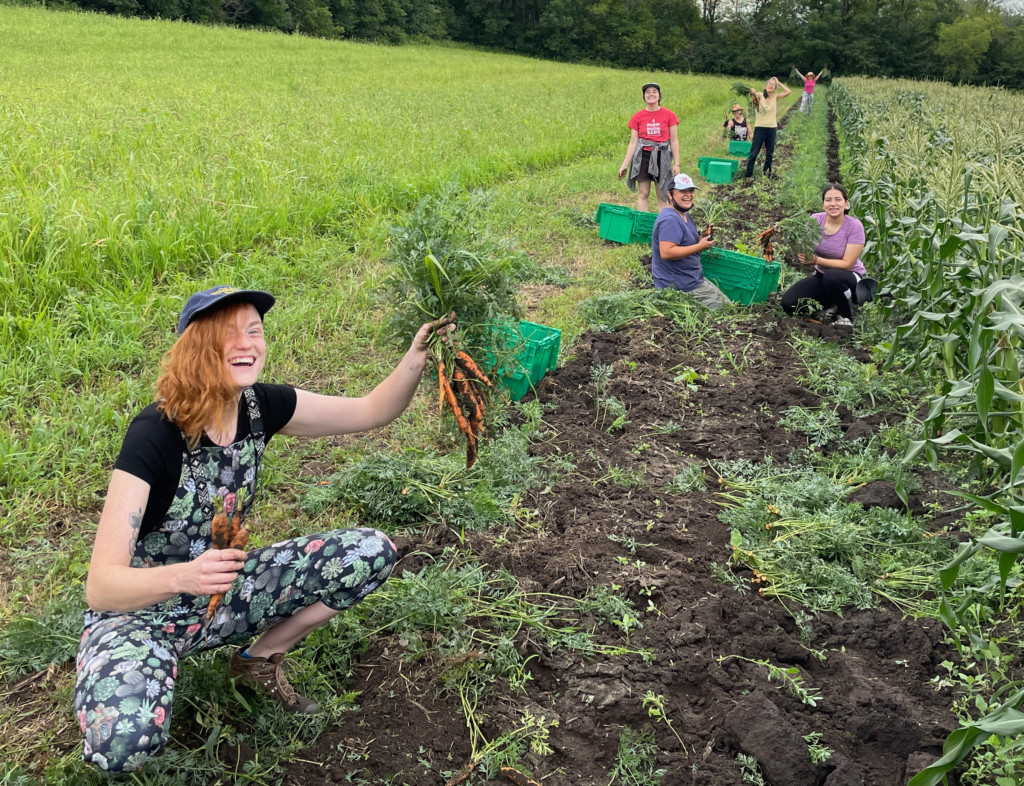
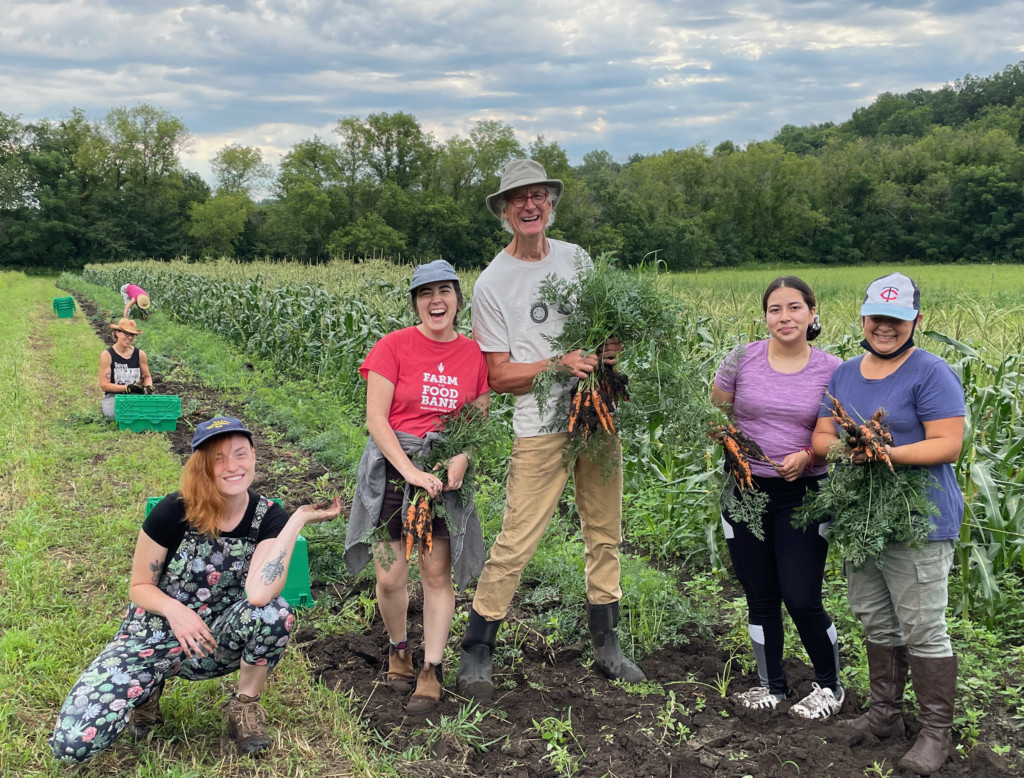
Hands full of carrots!
Here’s a video of the Carrot Washer
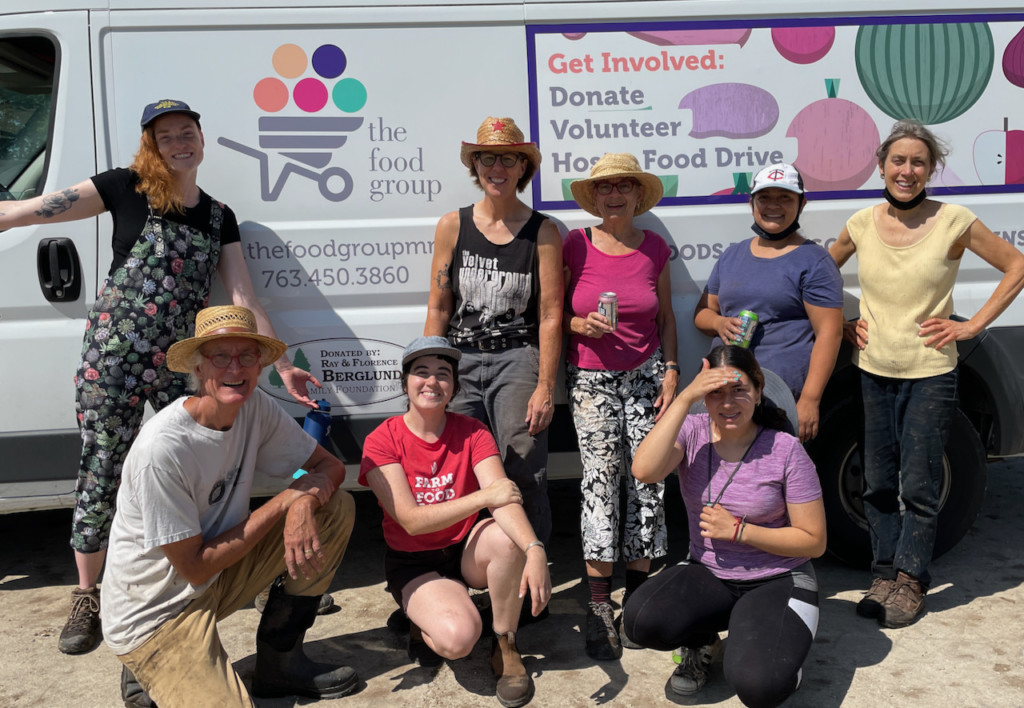
L-R Hannah, Bob, Danielle, Dillon, Barb, Itzel, Erika, Cara
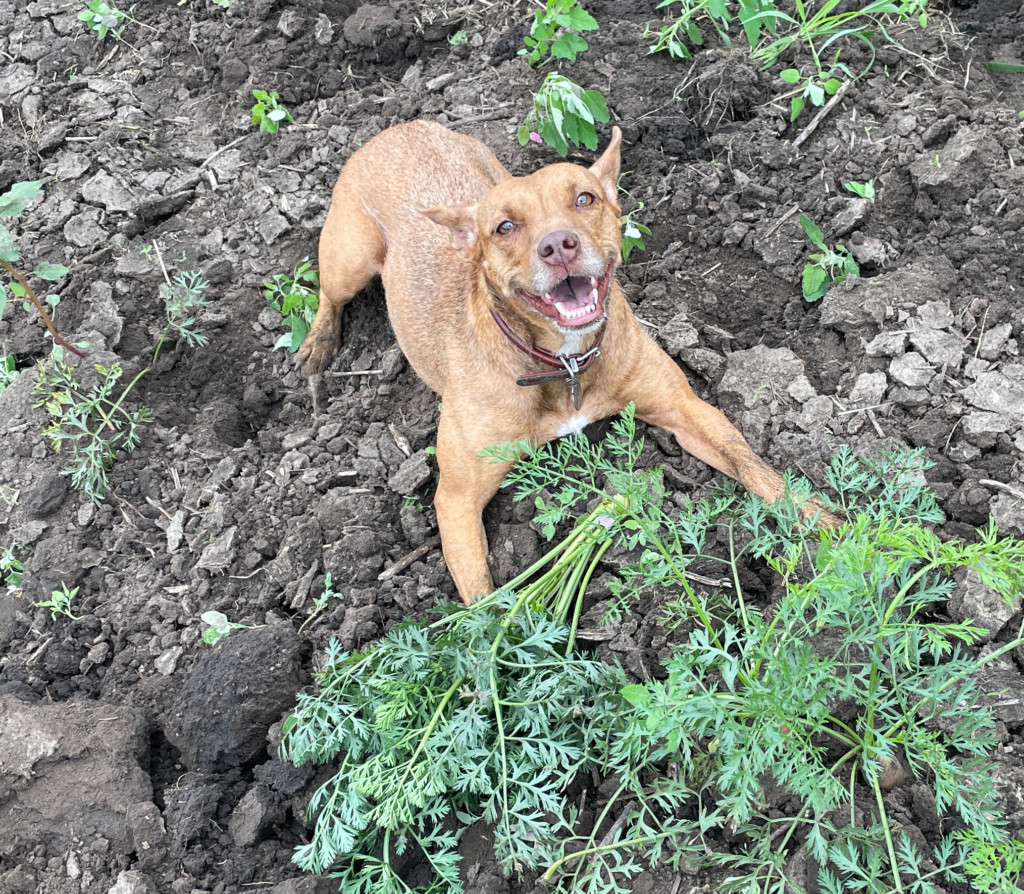
Of course our new farm dog, Jenny, has to help!
Thanks again to all the crew. Next week: the corn harvest begins!
Yesterday Danielle Piraino from The Food Group came to help make harvest plans for our carrots, corn and squash. The carrots are ready!! Two 650-foot rows of organically grown carrots to be distributed to families in need . . . with your help!

Danielle Piraino from The Food Group checking out this year's corn.
Danielle and Dana Jokela from Sogn Valley Farm helped make a plan to harvest the carrots next Thursday, August 12th. We need about 10-12 volunteers to help. Will you join us?
I've never harvested carrots but Smack did when he worked at the Hampshire College farm and he said it's really fun and satisfying. Come find out for yourself! Please call, text or email me if you'd like to join the fun.
Thanks!
Bob
Encore! Last year’s foodshelf project was so successful we’re doing it again. Once again Dana Jokela from Sogn Valley Farm has helped with planting and tillage (more on that later). Here are a few photos of the progress to date. It’s already been an “interesting” season. More details below the photos. First, take a look at the lovely progress so far:
Here’s a bit of what’s happened so far.
Adventure 1: We planted corn in early June but . . . seed corn maggot! Since we’re organic and can’t use treated seed the critters ate virtually the entire planting. Must have gotten lucky last year but this year we had to change plans quickly and start the corn plants in Dana’s greenhouse then transplant them (like we do the squash).
Adventure 2: Carrots need water to germinate. We planted when the forecast looked promising but . . . it changed. Dana loaned me a drip tape and I ran hoses out to the field. Then I had to soak the 2 rows repeatedly over several days which required moving the drip tape back and forth (only about a foot as you can see in the photos). This went on for about a week . . .
Adventure 3: The squash plants got transplanted right before the June heatwave. Had to move the drip tape from the carrots over to the squash. One drip tape (about 650 feet long), eight rows of squash. This required moving the drip tape every 3-4 hours so every row would get water every couple of days. Kept this up (through the nights – hooray for headlamps!) until the heat wave broke.
There’s more, of course, but it’s already been quite a season. We’ll see how it goes from here . . .
Thanks for reading. Further updates soon!
With only a few chores left in the fields, I want to reflect on this project and share a few of the things I learned.
It takes a village! First and foremost, this project could not have happened without Dana Jokela of Sogn Valley Farm. I freely admit to being a farmer wannabe. Dana is the real deal. He chose the varieties, placed the seed order, tilled, planted and helped with the cultivation. Please, help us reimburse Dana for his expenses (fuel, equipment, time and all) by contributing to this GoFundMe campaign (contributions are tax-deductible). 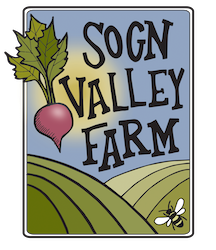
Besides Dana there were 63 volunteers who came and helped harvest – some several times. There were laughs, stories and a fair bit of mud, but most of all there was a shared joyous and generous spirit which was uplifting in these dark times. Again, my sincere thanks to all the volunteers.
We also had help from both staff and volunteers at the food shelves. Special shout-outs to Heidi Coe at Second Harvest for making so many connections, and to Ethan and Jovinta not only for their work at Pillsbury United Communities, but for bringing some of their staff to the farm for a farm to food bank connection (and even a little tractor driving!).
10,ooo pounds of food is a drop in the bucket. When I took a trailer load of squash to Second Harvest, what seemed like a lot of squash on the farm looked pretty tiny surrounded by 18-wheelers full of donated food (there are 35 loading doors at that facility!).
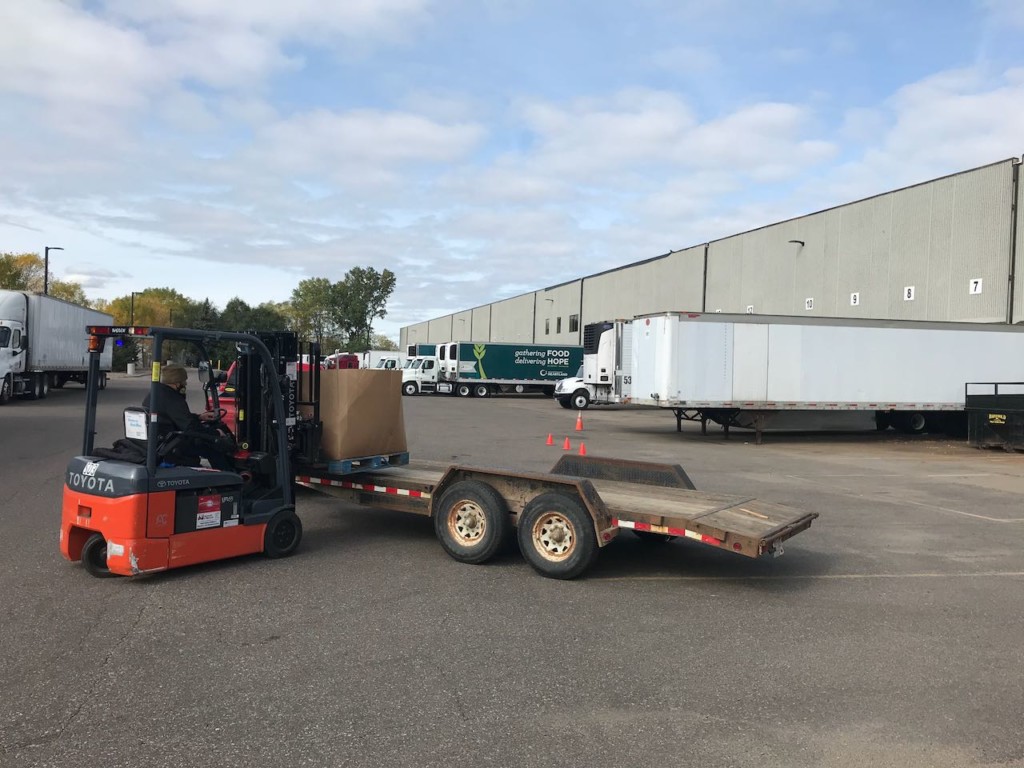
Offloading squash at Second Harvest
On their website Second Harvest Heartland reports that before the pandemic one in 11 Minnesota families was food insecure. Currently, it’s one in 8. No wonder the various foodshelves were so delighted to get our little contribution. (It should be noted also that much of what is donated is near or past its sell-by date and our donations were top-quality, fresh and organically grown – the good stuff!).
Carbon Footprint and Agriculture in 2020. We used a lot of fossil fuels. Tractors and trucks in the fields and delivering, and many cars bringing socially distanced volunteers to the farm and home again. Yes, it was do-able this year, but the cost to the environment is troubling and the reliance on non-renewable resources is unsustainable. It gives me pause.
When straight-line winds knocked our corn sideways in late July, we got lucky: the corn’s natural response helped the plants largely recover from the damage. Up the hill, Dana was not so lucky. One of his mainstay cash crops, sweet and hot peppers, was largely destroyed by the same storm. He’d already tilled, amended the soil, planted and cultivated – in other words, he’d invested time and treasure into the crop which was nearly ready to harvest. Then one two-hour storm wiped it out. He estimated a $100,000 loss from that one storm. But crop insurance effectively does not exist for farmers like Dana. The government’s “Get big or get out” policies protect the thousand-plus acre commodity farmers and leave small and medium scale organic and family farms like Sogn Valley with no protection. I see this not only as an issue of survival for family farms like Dana’s but as a threat to the resilience of our local food supply: we can’t eat the corn and soy that’s protected by the government’s policies. That’s nuts.
I’d like to do this again next year, but should we? I’m sure there will still be a huge need for donated food in a year’s time, but where will we be with the pandemic? Will people want to come out and harvest for food shelves? Is there a way to do this with a smaller carbon footprint? Can we raise enough money to cover Dana’s real costs? I don’t need to decide until it’s time to place a seed order, but I welcome thoughts and opinions at any time.
This has been a joy. Thanks again, everyone!

